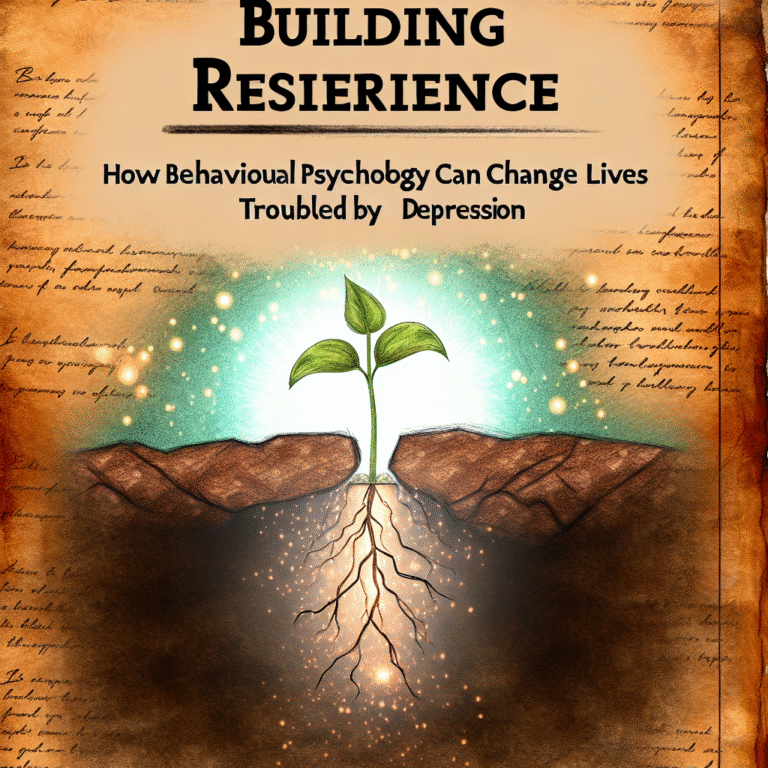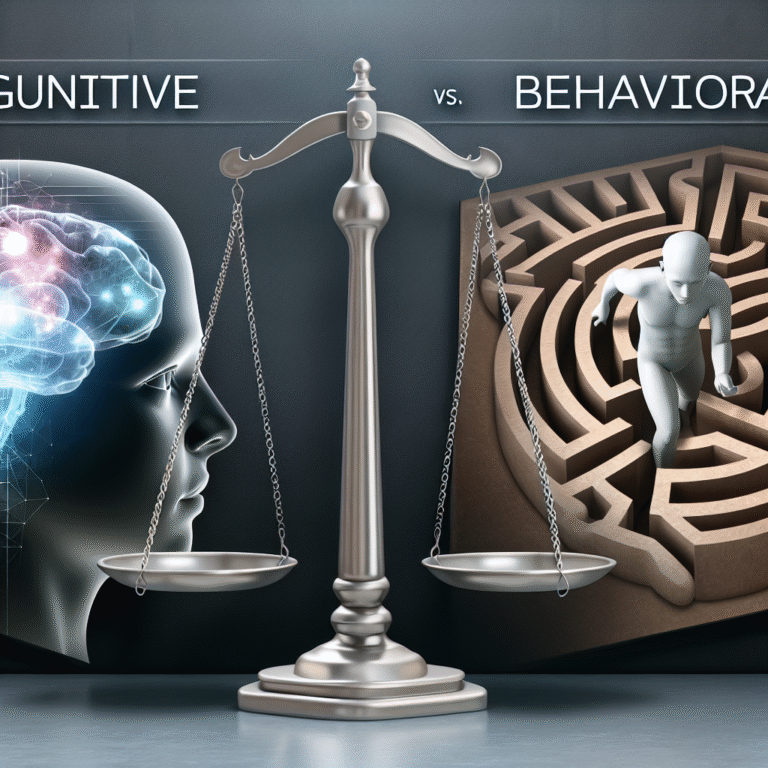
The Path to Recovery: Proven Behavioral Psychology Techniques for Phobia Relief
Introduction
Imagine living your life constantly on edge, where every creak of a floorboard or whisper of wind sends you spiraling into panic. For many, this is the daily reality of phobias—intense and irrational fears that can disrupt everyday functioning. Fortunately, there is hope. The path to recovery: behavioral psychology techniques for phobia relief offers a roadmap to overcoming these debilitating conditions, allowing individuals to reclaim their lives and live freely.
In this article, we will explore effective behavioral psychology techniques for phobia relief, and delve into the science behind these methods. By examining real-life applications through case studies, we will illustrate how these techniques work. Whether you’re struggling with a specific phobia or supporting someone who is, the insights shared here can serve as your guide to recovery.
Understanding Phobia: A Psychological Perspective
Phobias are more than just fears; they are classified as anxiety disorders, characterized by an overwhelming sense of dread triggered by specific objects, situations, or activities. Common phobias include fear of spiders (arachnophobia), heights (acrophobia), and flying (aviophobia). While it’s normal to have fears, phobias create an irrational response that can lead to avoidance behavior, impacting daily life.
The Science Behind Phobias
From a psychological standpoint, phobias can develop through a combination of genetic, environmental, and learned factors. The amygdala, a region of the brain involved in fear processing, plays a significant role in how individuals respond to fearful stimuli. When faced with a phobic trigger, the body’s "fight or flight" response is ignited, leading to symptoms such as rapid heartbeat, sweating, and a feeling of impending doom.
The Path to Recovery: Behavioral Techniques for Phobia Relief
Behavioral psychology offers several effective techniques to tackle phobias head-on. Here’s a breakdown of some proven methods that pave the path to recovery:
1. Exposure Therapy
Overview:
Exposure therapy is a cornerstone of behavioral treatment for phobias. It involves gradual exposure to the feared object or situation in a controlled environment to desensitize the individual over time.
Case Study:
Consider Sarah, who had a crippling fear of dogs. Through exposure therapy, she began by looking at pictures of dogs, progressed to watching videos, and eventually moved to visiting a friend with a dog. After several weeks, Sarah reported a significant decrease in her anxiety levels, allowing her to interact with dogs comfortably.
Relevance:
Exposure therapy’s effectiveness lies in its systematic approach, enabling individuals to confront their fears gradually and safely, which is fundamental on the path to recovery: behavioral psychology techniques for phobia relief.
2. Cognitive Behavioral Therapy (CBT)
Overview:
CBT blends cognitive and behavioral techniques to restructure distorted thinking patterns around fears. It not only addresses the fear itself but also helps individuals develop coping strategies.
Case Study:
John suffered from an intense fear of flying, stemming from a traumatic childhood experience. Engaging in CBT, he learned to identify irrational thoughts about flying and replace them with realistic beliefs. After several therapy sessions, he was able to take a short flight without panic.
Relevance:
CBT empowers individuals to take control of their thoughts regarding their phobia, making it a powerful technique in the path to recovery: behavioral psychology techniques for phobia relief.
3. Systematic Desensitization
Overview:
Systematic desensitization combines relaxation techniques with gradual exposure to the fear. It helps individuals manage anxiety levels during exposure.
Case Study:
Emily, a college student with a fear of public speaking, utilized systematic desensitization to overcome her phobia. She started practicing relaxation techniques and then systematically faced her fear by speaking in front of small, supportive groups, eventually leading to her delivering a presentation in front of her entire class.
Relevance:
Combining relaxation with exposure, systematic desensitization assists individuals in building confidence as they confront their fears, illustrating another effective technique on the path to recovery: behavioral psychology techniques for phobia relief.
4. Virtual Reality Exposure Therapy (VRET)
Overview:
VRET employs virtual reality technology to simulate environments that trigger phobia responses while allowing a controlled exposure experience.
Case Study:
Michael, who had a severe fear of heights, engaged in VRET. Using a virtual reality headset, he faced progressively more intimidating scenarios, such as standing on a ledge of a tall building. This innovative approach enabled him to build tolerance and positively transform his response to heights.
Relevance:
VRET offers a safe and controlled environment that can be personalized for each individual’s fears, showcasing modern advances in behavioral therapy that align with the path to recovery: behavioral psychology techniques for phobia relief.
5. Mindfulness and Relaxation Techniques
Overview:
Mindfulness entails staying present and engaged, while relaxation techniques—such as deep breathing and guided imagery—help manage anxiety.
Case Study:
Linda had a fear of flying that led to avoidance of travel. Through mindfulness practices, she learned to recognize anxious thoughts without judgment and employed deep breathing exercises before and during flights. Over time, she flew to several family gatherings, reducing her anxiety significantly.
Relevance:
Incorporating mindfulness and relaxation creates a holistic approach to managing phobias, enhancing the overall effectiveness of behavioral techniques for relief on the path to recovery.
Practical Insights and Tables
Techniques Overview Table
| Technique | Description | Key Benefits |
|---|---|---|
| Exposure Therapy | Gradual exposure to feared stimuli | Desensitization to fear |
| Cognitive Behavioral Therapy (CBT) | Restructuring negative thought patterns | Improved coping strategies |
| Systematic Desensitization | Relaxation plus exposure | Building confidence |
| Virtual Reality Exposure Therapy (VRET) | Simulated fear environments | Safe exposure, personalized experience |
| Mindfulness and Relaxation Techniques | Staying present, managing anxiety | Enhanced emotional regulation |
Flow of Recovery
- Recognition of Phobia – Acknowledge the fear.
- Professional Guidance – Seek behavioral therapy.
- Technique Implementation – Begin exposure or CBT.
- Regular Practice – Utilize mindfulness and relaxation.
- Gradual Improvement – Notice changes in response to triggers.
- Sustained Recovery – Maintain techniques for ongoing resilience.
The Importance of Support in Phobia Recovery
Overcoming phobias can be challenging, which is why social support plays a crucial role. Engaging family and friends during the recovery process can provide encouragement and accountability. Group therapy can also be beneficial, allowing individuals to share experiences and strategies, further solidifying the path to recovery: behavioral psychology techniques for phobia relief.
Conclusion
Phobias, while distressing, are not insurmountable barriers. By understanding the root causes and employing effective behavioral psychology techniques, individuals can navigate their way through fear towards a life filled with possibilities. The key takeaway is that recovery is achievable; the combination of resilience, the right techniques, and a supportive environment can guide anyone on the path to recovery: behavioral psychology techniques for phobia relief.
Embrace the journey, take small steps, and know that overcoming fear is within your grasp. Recovery is not only possible; it’s a path worth taking.
FAQs
1. What is a phobia?
A phobia is an intense, irrational fear of a specific object, situation, or activity that leads to avoidance and distress.
2. How do I know if I have a phobia?
If your fear significantly disrupts your daily life or causes extreme anxiety, it may qualify as a phobia.
3. Can phobias be treated without therapy?
While self-help strategies can be beneficial, professional therapy, especially behavioral techniques, is often more effective for lasting relief.
4. How long does it take to overcome a phobia?
The duration of recovery varies per individual, depending on the severity of the phobia, the chosen techniques, and the level of commitment to the recovery process.
5. Are there any risks associated with exposure therapy?
Exposure therapy is safe when conducted by a trained professional. However, a gradual approach ensures that patients do not feel overwhelmed.
This article explored significant aspects of the path to recovery: behavioral psychology techniques for phobia relief. By integrating psychological insights with practical techniques, individuals can effectively combat phobias and regain control over their lives. Embrace the techniques outlined above and take the first step towards a more liberated and fulfilling existence.
















